6 June, 2000
Growlers, Pancakes, and Bergy Bits
"Hey! Look down there! I think it's a growler!"
The Dolphin swooped down for a closer look. "No, looks more like a bergy
bit to me. Let's keep looking."
What's this? Dolphins looking for polar bears? Not quite. The "dolphin" in
this story is the HH65 Dolphin, the helicopter used by the Coast Guard
primarily for search and rescue. Today the Dolphin's crew was searching for
growlers, pancakes, bergy bits, and other ice formations floating in the
Davis Strait off the coast of Labrador.
There are lots of different kinds of ice in the polar regions. Scientists
classify ice according to its age, where it comes from, and how it was
formed. For instance, bergy bits are large pieces of ice that have broken
off from glaciers or icebergs. Growlers are smaller than bergy bits, and
often look green or black. Pancake ice is freshly frozen seawater that
looks like…you guessed it! Pancakes!
Earlier that morning, we had entered our first ice field. Susan and I were
so excited to finally get to the ice! It was mostly chunks of brash ice,
which are the pieces that separate from the giant floes as they begin to
break up in the spring. The largest pieces were only as big as pianos, but
we didn't care. We were in the ice at last!
The scientists on board the Healy needed a parcticular kind of ice so they
could do their experiments. They got together with the captain and crew to
look at satellite pictures to find a good location to do their work.
Because the ice is breaking up and melting so quickly, they decided to send
out a helicopter on an "ice recon mission." "Recon" is short for
"reconnaissance", which is a French word that means "to look for." The
helicopter crew was going out to search for ice - and they had room for two
passengers!
Susan and I were so excited to have the chance to fly in a helicopter! We
suited up quickly in our orange Mustang suits and special helmets. We had
already gone through our safety training the day before.
The pilots started the engine, and the rotor blades began to spin. Susan
and I waited at the side of the flight deck as the crew prepared for lift
off. My heart was beating so fast! Then the landing signal officer motioned
to us to board the helicopter. We ran towards it, climbed in, and buckled
our safety harnesses. Moments later we were airborne, hovering over the
Arctic Ocean!
To find out more about our flight, click on Susan's page:
Susan's Entry Today.
DAILY DATA LOG (6/06/00)
Air Temperature: 36 degrees F
Clear skies, sunny
Latitude 59N
Longitude 61W
Sunrise 4:48
Sunset 10:33
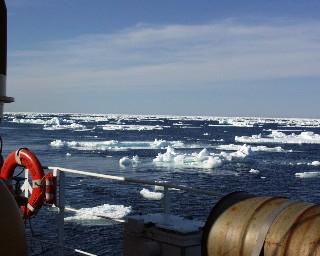
Beautiful day for a flight! We're off to find more ice!
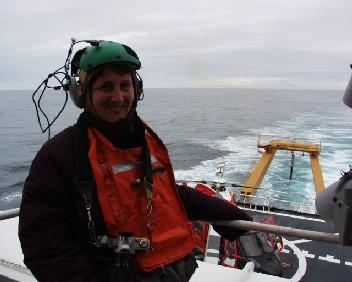
This is me in my special helmet called a cranial.

Lift off!
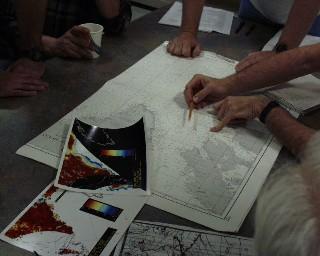
Satellite images and charts help to determine where to look for specific kinds of ice. This takes planning by many skilled people.

The striped propeller blades are more visible. What design do you think they make when they spin?

John Malmquist demonstrates how we should put on our life vests.
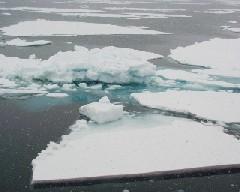
We travel through various shapes of ice. Each piece looks different from the others.
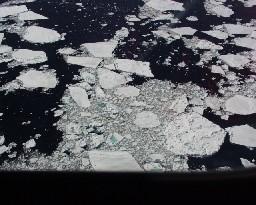
Different kinds of ice
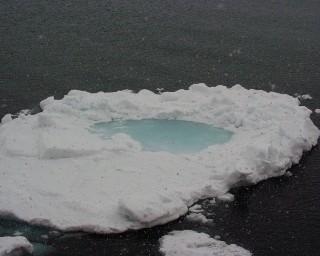
There's a melt pool in the center of this piece!
Contact the TEA in the field at
.
If you cannot connect through your browser, copy the
TEA's e-mail address in the "To:" line of
your favorite e-mail package.
|
